Moderately strong M5.2 solar flare erupts from AR 3141
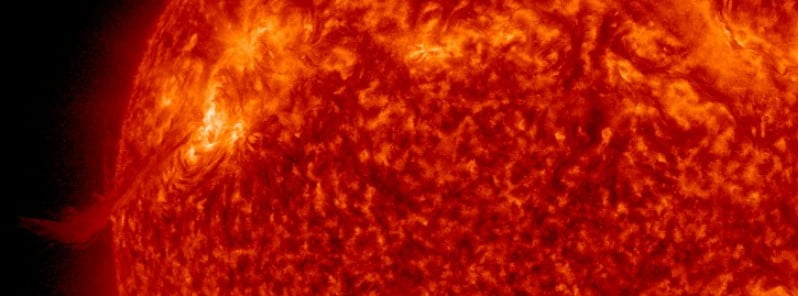
A moderately strong solar flare measuring M5.2 at its peak erupted from Active Region 3141 (beta) at 00:11 UTC on November 7, 2022. A coronal mass ejection (CME) was produced during the event but the location of this region does not favor Earth-directed CMEs.
A Type II Radio Emission, with an estimated velocity of 927 km/s, was associated with this event. Type II emissions occur in association with eruptions on the Sun and typically indicate a coronal mass ejection is associated with a flare event.
In addition, a 10cm Radio Burst, with a peak flux of 740 sfu and lasting 3 minutes, was also associated with the event.
A 10cm radio burst indicates that the electromagnetic burst associated with a solar flare at the 10cm wavelength was double or greater than the initial 10cm radio background. This can be indicative of significant radio noise in association with a solar flare. This noise is generally short-lived but can cause interference for sensitive receivers including radar, GPS, and satellite communications.
The location of this region does not favor Earth-directed CMEs.
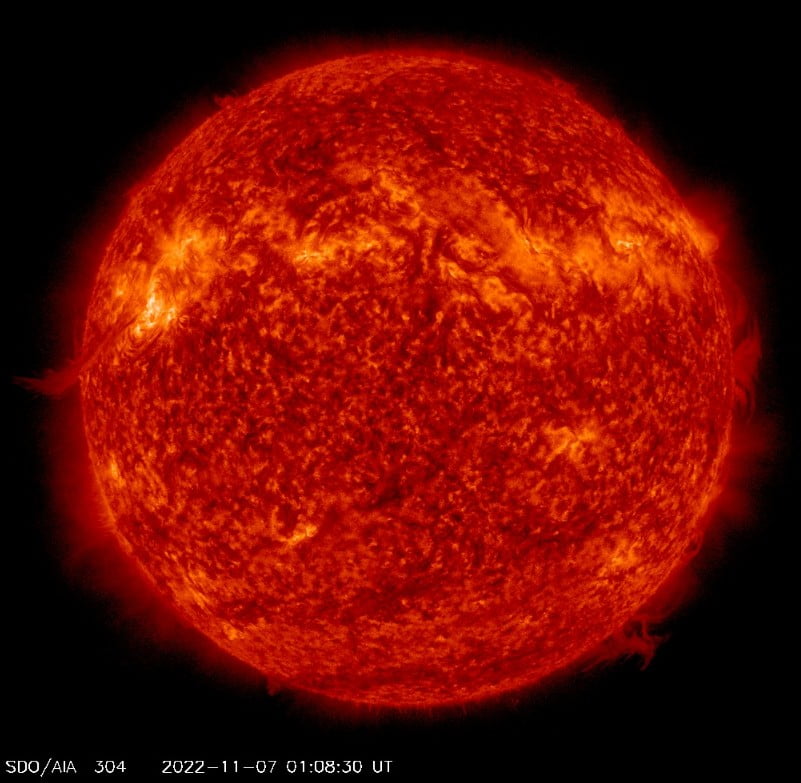
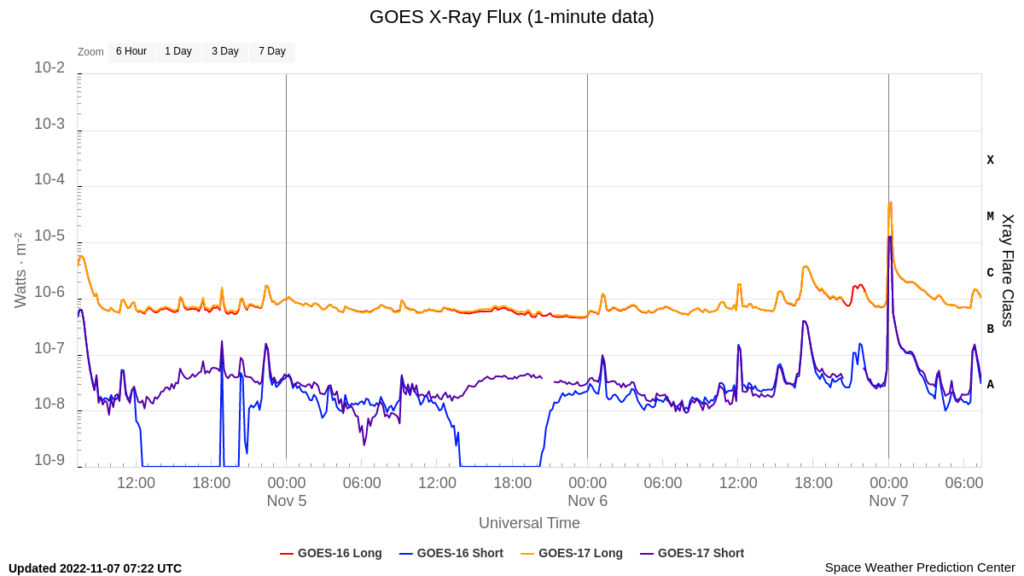
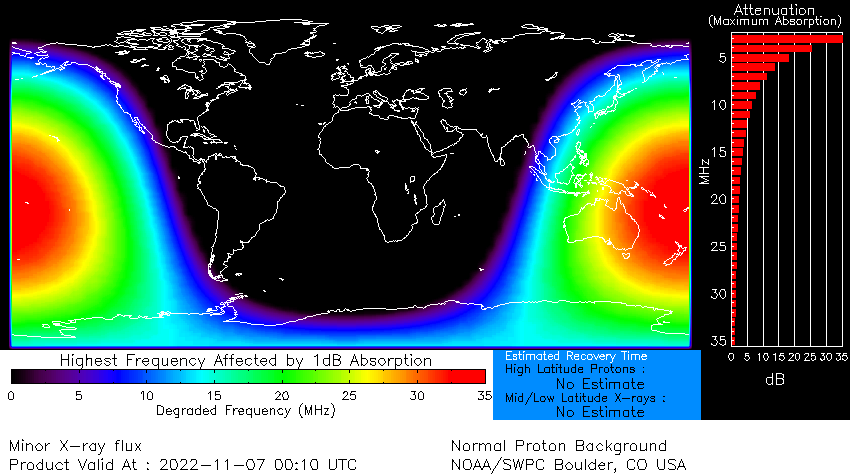
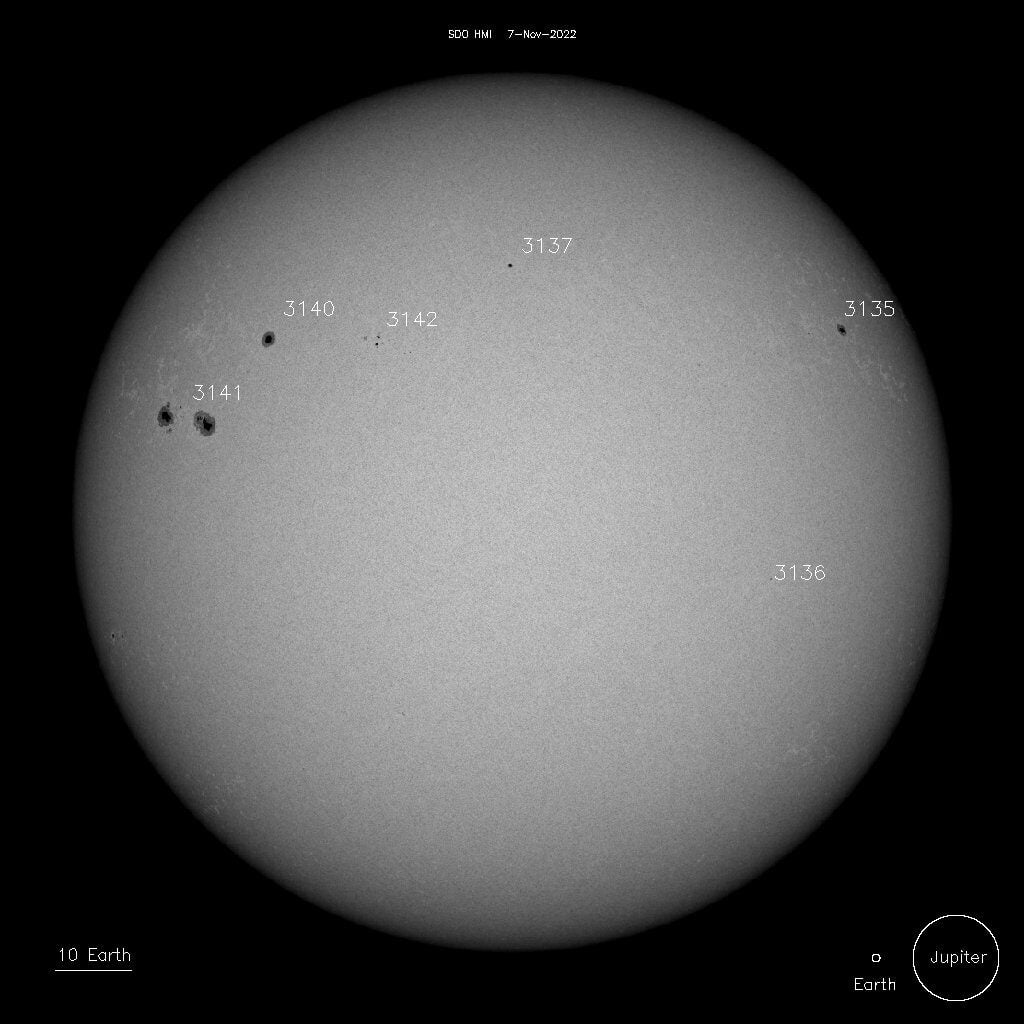
Region 3141, responsible for this flare, exhibited substantial growth, both in area and spot count, over the past 24+ hours.1
Solar activity is expected to be at very low levels, with a chance for C-flares through November 9, SWPC forecasters said at 00:30 UTC today.
Solar wind parameters, as measured by the DSCOVR spacecraft, suggested a transition from positive polarity coronal hole high speed stream (CH HSS) to mostly nominal conditions in 24 hours to 00:30 UTC on November 7.
The solar wind environment is expected to be near background levels before becoming weakly enhanced late on November 7 due to possible influence from a weak, southern positive polarity CH HSS.
On November 8 and 9, further enhancements are possible due to the influence of additional isolated positive and negative CH HSSs.
The geomagnetic activity was at quiet levels. It is expected to range from quiet to unsettled levels on November 7 increasing to quiet to active levels on November 8 and 9, all due to CH HSS influence.
References:
1 Forecast Discussion issued: 2022 Nov 07 0030 UTC – Prepared by the U.S. Dept. of Commerce, NOAA, Space Weather Prediction Center
Featured image: CME produced by M5.2 solar flare on November 7, 2022. Credit: NASA SDO/AIA 304, The Watchers

Commenting rules and guidelines
We value the thoughts and opinions of our readers and welcome healthy discussions on our website. In order to maintain a respectful and positive community, we ask that all commenters follow these rules.